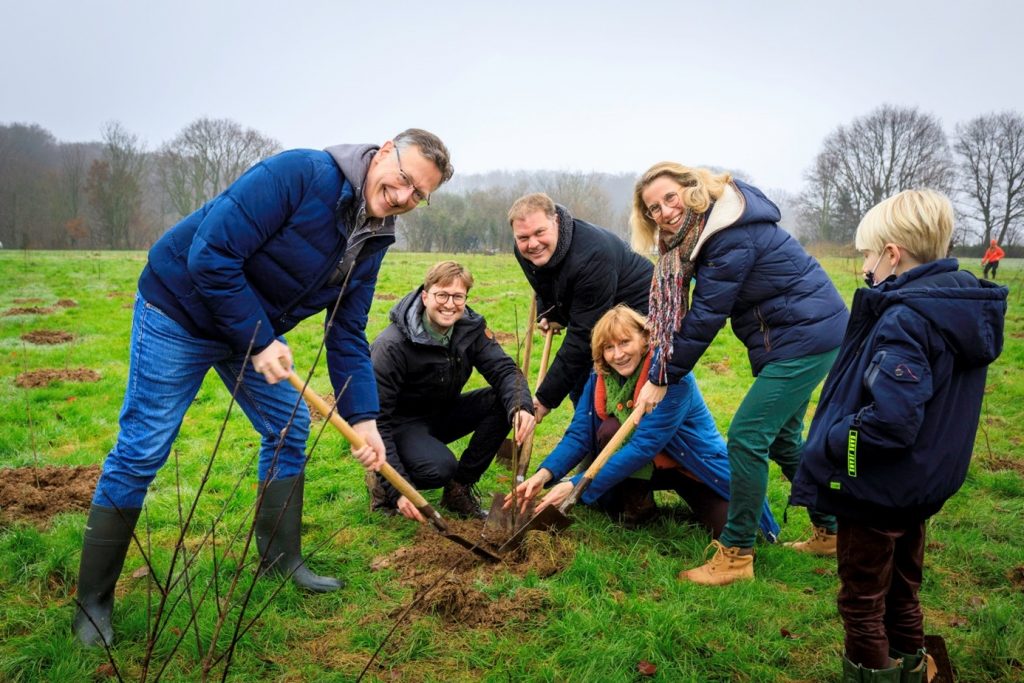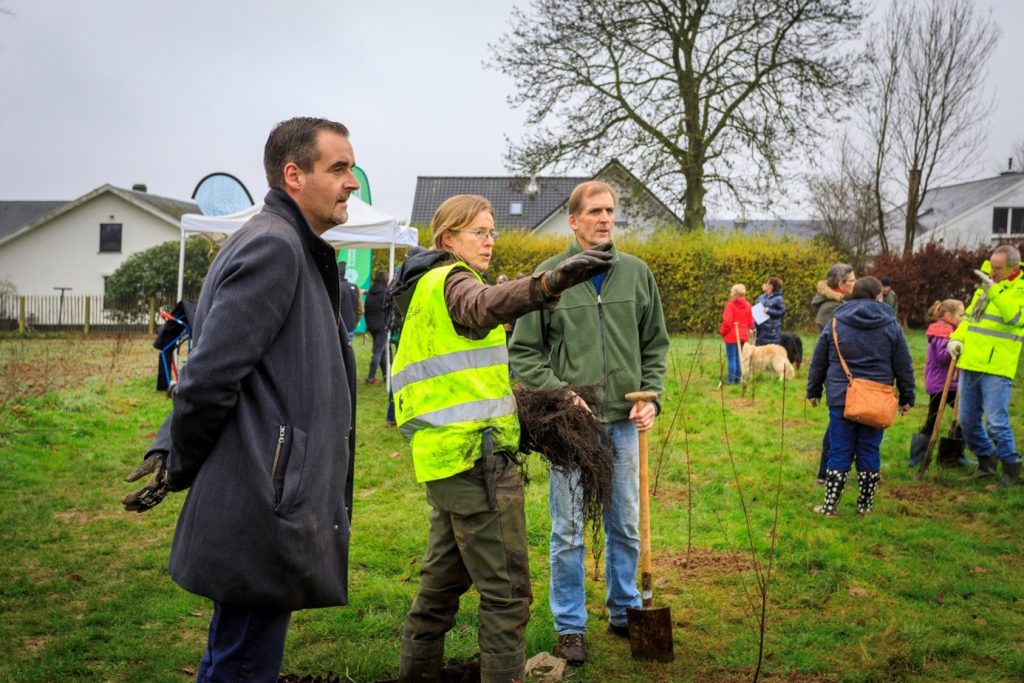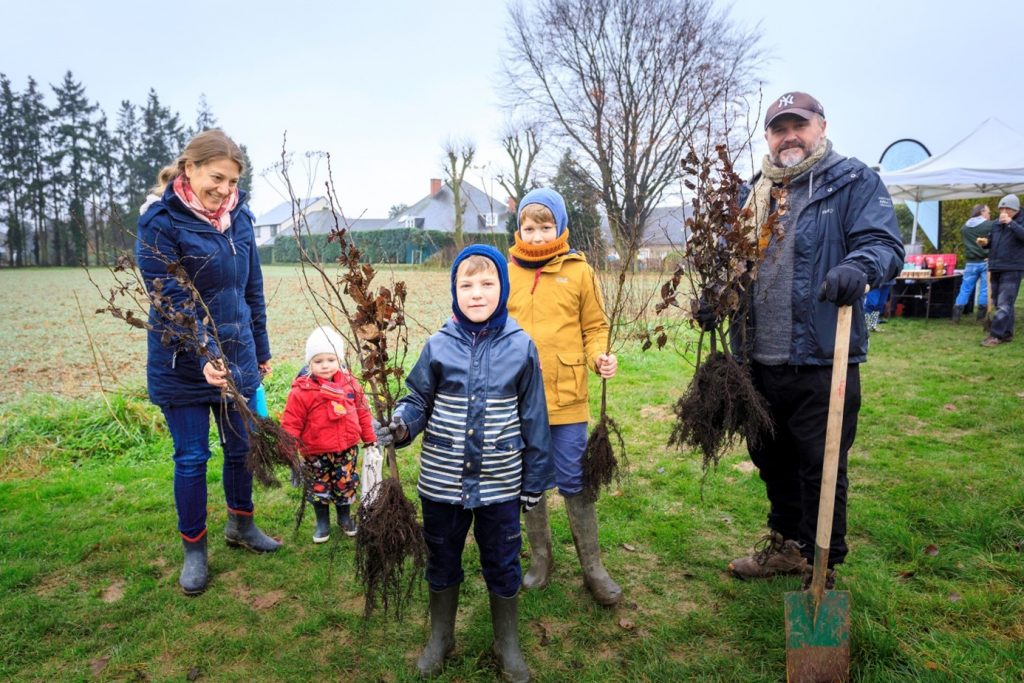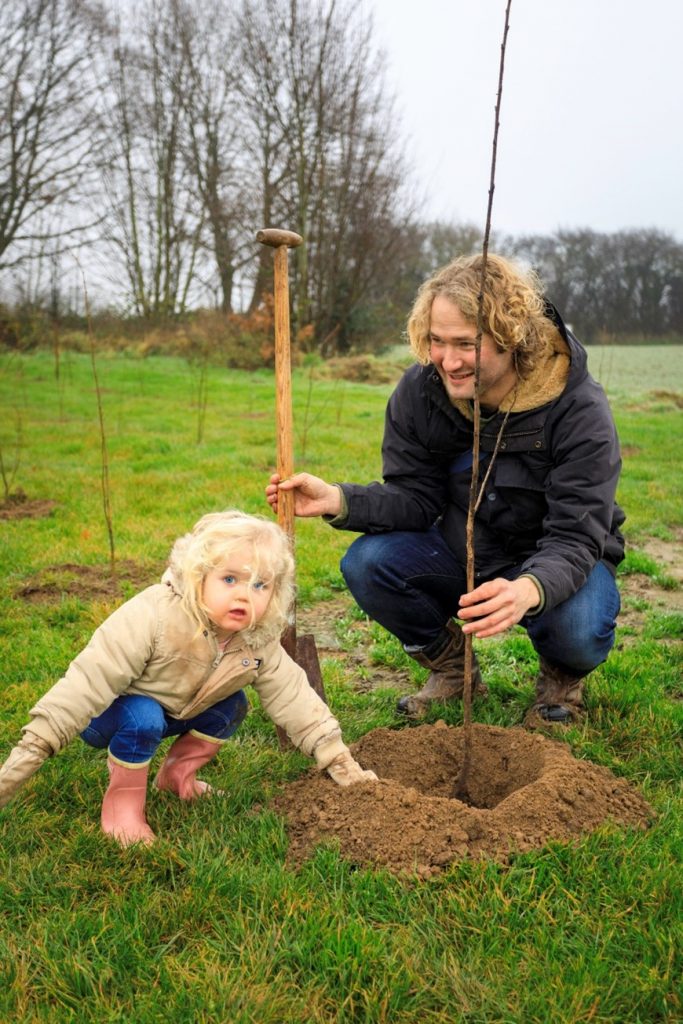
120 Minutes, 1200 Trees
Climate neighbourhoods as laboratories and examples for sustainable neighbourhoods
Within the Strategic Project Horizon+ in which the Province of Flemish Brabant plays a coordinating role, four so-called klimaatwijken or ‘climate neighbourhoods’ were selected in which a participation process will be launched in the coming years in order to create sustainable, biodiverse and green neighbourhoods in collaboration with residents and garden owners. These four neighbourhoods will work as test laboratories and set an example in increasing local water management, increasing ecological connectivity between individual gardens, increasing tree cover and biodiversity. Through three separate tracks (public space, private gardens and energy aspects of the built environment) we strive for a holistic view of the ‘climate neighbourhood’.

Green public space, by and for citizens
In one of these pilot neighbourhoods, the Province, in cooperation with the local municipality Tervuren, organised a planting event for a new forest in December 2021. The neighbourhood is located between two existing forests, Moorselbos and Hogenbos, and therefore has the potential to become an important connection between existing green structures. During the upcoming participation process, garden owners will be encouraged to develop their gardens as stepping stones in this cross-neighbourhood, green-blue structure. On the other hand, looking at available space at the fringes of the neighbourhood provides valuable opportunities to connect existing green areas, increasing the ability for plant and animal species to migrate between forests. That is why a former football field at the edge of the neighbourhood was chosen as the location of the new forest. In a neighbourhood with no public parks, the forest will be a welcome addition to the public space.


A forest with many functions
Landscape architect Kobe Kiekens developed a design plan for a speelbos or ‘play forest’ where children can safely play between the trees. The design also includes an orchard and an area with grassland that encourages different social activities and increases the area’s biodiversity. The design was finalised in cooperation with the provincial forest association (Bosgroep Vlaams-Brabant). The project comprises three lobes of forest, with a mix of indigenous and non-indigenous tree species. A deliberate choice was made to use climate-robust tree species. A mix of broad-leaved trees such as winter lime, hornbeam, sweet chestnut and sessile oak was planted. Forest edges increase the biodiversity value of the forest. In these edges, shrubs such as hazel, European spindle, dogwood and wild rosemary were planted. Later, fruit trees will be added to one side of the forest in order to increase the value of the space for the neighbourhood.

Many hands make light work
After removing the remaining abandoned buildings on the site, about 2000 planting holes were drilled in preparation for the planting operation. On Sunday, more than sixty local residents came together to plant 1200 trees and shrubs in a mere two hours. The remaining trees were planted the next week by a social employment agency. The planting campaign thus not only ensures the concrete realisation of more forest in the neighbourhood, but also has an important social function with which the province wants to entice committed citizens who want to get involved in the realisation of the climate neighbourhood in the important and ambitious years to come. One day, the many present young children will undoubtedly enjoy the shade of the trees they planted in a changing climate.

